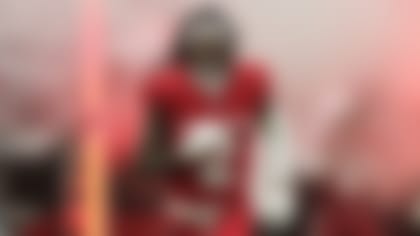When I started working as a scout for the Seattle Seahawks in 2000, I had a memorable conversation with veteran secondary coach Dick Roach about what to look for when evaluating safeties.
He started off by emphasizing the importance of football intelligence, awareness and instincts. He talked about how they needed to be natural leaders capable of taking charge under pressure, since they would be responsible for making all of the calls and adjustments in the secondary.
Physically, Roach talked about how the evolution of the passing game made it necessary for safeties to possess the speed, athleticism and cover skills of a corner. He pointed out how offensive coordinators were willing to displace tight ends or use three receivers on early downs to create mismatches, which made it mandatory for a safety to be comfortable in space.
Although he wanted to have a safety capable of functioning as an eighth defender near of the line of scrimmage, Roach routinely stated that an ideal secondary would feature a safety with extensive experience as a corner because it would make him a more effective playmaker against the pass and result in more turnovers for the defense.
Roach's words left a lasting impression on me because they came at a time when one of my former teammates, Darren Sharper, was blossoming into a star after entering the league as a corner.
Sharper, a five-time Pro Bowl selectuion with 63 career interceptions, successfully shifted into a free safety after spending his rookie season playing as a cornerback in the Packers' sub-packages. He routinely covered the opponents' No. 3 receiver or tight end based on formation, and his experience in those matchups served him well as his career progressed. He was very comfortable dropping into the box to blanket tight ends and slot receivers in man coverage.
More importantly, the instincts, awareness and anticipation that he developed while playing on the corner helped him become one of the best ball hawks in league history.
A quick look at the 2011 NFL Pro Bowl rosters reveals several players -- Michael Griffin, Brandon Meriweather, Eric Berry, and Antrel Rolle -- with cornerback experience from their collegiate days manning the safety spots.
Rolle, in particular, has blossomed into an all-star after making the transition from cornerback to safety. Although some would say that his stint at cornerback was a failure, his ability to be used as a nickel-corner for the Arizona Cardinals and now the New York Giants has made him the versatile secondary defender coordinators love to build around.
This year, the safety class is full of cornerback-turned-safety types with the potential to occupy similar roles for their respective teams.
Aaron Williams of Texas has garnered the most attention because teams are undecided about his ideal position. At 6-foot-1, 200 pounds, he is a big corner with the size to battle the rangy No. 1 receivers in the league, but his natural range and athleticism makes him an ideal prospect for the safety position.
Clemson's Marcus Gilchrist and Florida's Ahmad Black also provide versatility at the position due to their experience floating between corner and safety, so their value is certain to rise as draft day approaches.
Let's take a look at the challenges scouts face in projecting their potential as safeties on the next level:
Aaron Williams, Texas
He has been pegged as the top safety prospect in the draft despite spending most of his time on the island. He has outstanding size, speed, athleticism, and range for the position. Though he will enter the league without relevant experience at safety, his instincts, awareness and ball skills make him an intriguing fit as a deep-middle player.
Williams' superior tackling ability and special-teams skills lead me to believe that he will be an effective player against the run. While it is such a projection forecasting his skills at a new position, Williams' athleticism and intangibles make it hard to bet against the transformation.
Scouts and coaches will dig deep into Williams' profile to assess his football intelligence and leadership skills. He has come off well in interviews, but handling those obligations are vastly different than taking control of the secondary, and he must display that kind of leadership while discussing the scheme with team personnel. If he can address that looming concern, he could cement his status as the top safety in the draft despite being a projection pick at the position.
Ahmad Black, Florida
The diminutive safety has fallen off the charts a bit since clocking disappointing times at the NFL Scouting Combine. However, his tape reveals a player with good instincts, awareness and skills. He plays with a veteran's savvy and has a knack for getting around the ball. Though his size prohibits him from making plays against big tight ends and receivers, he shows a competitive spirit that allows him to win his fair share of battles.
As a run defender, he is aggressive, but lacks the bulk to knock runners off their pins. He repeatedly falls off tackles after making contact, and his size limitations could be a problem at the next level. Although his effort is commendable, he could be a liability if used near the line of scrimmage on a consistent basis.
Scouts certainly admire Black's instincts, toughness and passion, but his size and speed are huge concerns. His durability could be a concern if he has to play on an every down basis. However, his track record has been solid throughout his career, and he enters the league with a clean slate. If scouts can get comfortable with the idea of having a Jim Leonhard-like safety, he could be a solid pick in the middle stages of the draft.
Rahim Moore, UCLA
Moore has often been cited as the top safety available, but he falls under the centerfield mold at the position. He is at his best roaming from the middle of the field, while reading the quarterback's eyes and anticipating routes. His remarkable instincts put him in position to make plays on the ball, and he has a knack for producing turnovers.
Though Moore's interception totals dipped in 2010, he continued to make plays with his hustle and natural intuition. As a run defender, he is not a big thumper in the hole but is a serviceable tackler. He attacks them at the knees and does decent job of getting them to the ground.
Moore's critics wonder about his ability to play with force and power against the run. He has a finesse nature to his game, and he will need to mix up on a regular basis to prevent teams from directing their running game in his direction. He has flashed toughness at times but needs to take his physical approach to another level. If he shows signs of being able to do that, he could come off the board near the middle of Round 2.
Marcus Gilchrist, Clemson
Gilchrist is one of the more intriguing players at the position due to his versatility and experience. He has spent a lot time floating between corner and safety at Clemson, and that makes him an ideal fit as a sub-package player. He has the size and strength to play near the box in run defense, while also possessing the quickness and movement skills to match up with tight ends or slot receivers. Although his ball skills are suspect, he has enough athleticism to get over the top on deep throws.
He is a solid run defender with adequate instincts and awareness. He quickly attacks the alley but is not a big thumper in the hole. He effectively gets runners down but is not the enforcer some teams covet in the middle.
Scouts might struggle projecting Gilchrist's natural position based on his scattered playing history. However, his versatility will give him a chance to hold down a roster spot as a swing player capable of wearing several hats on game day. He will be an interesting mid-round pick.
Follow Bucky Brooks on Twitter @BuckyBrooks.





